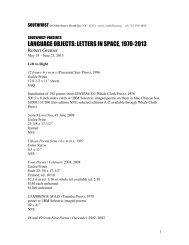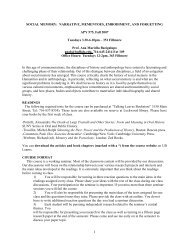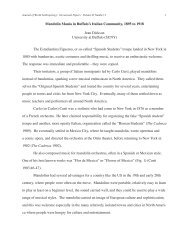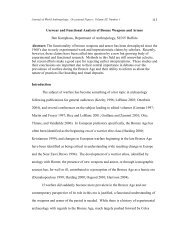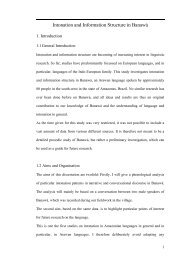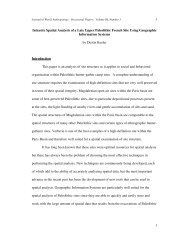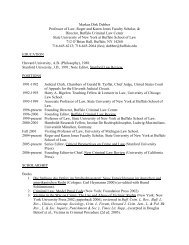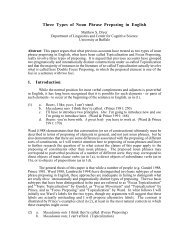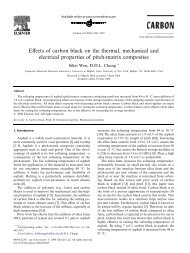Electrophysiological Evidence for Sentence Comprehension - Wings
Electrophysiological Evidence for Sentence Comprehension - Wings
Electrophysiological Evidence for Sentence Comprehension - Wings
Create successful ePaper yourself
Turn your PDF publications into a flip-book with our unique Google optimized e-Paper software.
ERP wave<strong>for</strong>m. Components are conventions in ERP research. Their names usually<br />
consist of polarity and peak latency (N and P <strong>for</strong> negative and positive with a number<br />
attached to it; <strong>for</strong> example, N400 <strong>for</strong> a negative peak at approximately 400 milliseconds<br />
from the onset of the stimuli). Sometimes they have an ordinal number after the polarity<br />
sign. The ordinal number represents the position of the peak after the stimulus (e.g. P1 is<br />
the first positive wave after the stimulus, P2 second, etc.). Functional names are<br />
sometimes given; <strong>for</strong> example, Syntax Positive Shift (SPS) <strong>for</strong> a positive wave obtained<br />
with stimuli that contain syntactic error. Finally, sometimes the names are based on the<br />
scalp distribution, <strong>for</strong> example, ‘left anterior negativity’ (LAN) <strong>for</strong> the negative wave that<br />
can be recorded on the left frontal electrodes.<br />
There is no complete agreement to what the components really mean (Coles & Rugg,<br />
1995, Otten & Rugg, 2005). There are two general approaches to component<br />
identification: physiological and psychological. The first (physiological) approach is<br />
characterized by the claim that the neuronal population that carries out the activity that<br />
generates the recorded deflection in the ERP wave<strong>for</strong>m should be specific (Näätänen &<br />
Picton, 1987). In other words, the defining characteristic of a component is its anatomical<br />
source (Coles & Rugg, 1995:8). The researchers who adopt the psychological approach<br />
claim that the component is, in fact, the in<strong>for</strong>mation process that is manipulated in the<br />
experiment. The effect of this manipulation is visible as a deflection in the ERP<br />
wave<strong>for</strong>m. So, components are the cognitive functions that are per<strong>for</strong>med by brain (and<br />
are manipulated in experiments). In practice, the definition of the component comprises<br />
both physiological and psychological criteria (Otten & Rugg, 2005): while polarity and<br />
18




